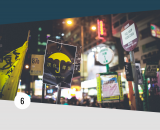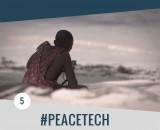Show and Tell: The Narratives Driving ISIS Youth Recruitment
In October 2015, the Islamic State (subsequently referred to in this article as Daesh*) published a very different kind of propaganda statement. Released online through its media wing, the statement featured no beheadings, explosions, or even statements of violent intent. Rather, it released photos from “Ride City” one of two new amusement parks recently opened in Daesh-held territory. The idea that the group that has become infamous for its brutality is also operating teacup rides and other carnival fare seems, at first, like an elaborate joke. Instead, these forays into soft power are a strategic evolution of Daesh’s domestic campaign, where concerns of governance and state building are increasingly in focus. There is perhaps no better indication of this shift in strategy than the emphasis on Daesh’s new target audience for propaganda: children.
The use of child soldiers in conflict is appalling—but it is nothing new. Insurgent groups like Boko Haram in Nigeria or the Lord’s Resistance Army in Uganda are well known for their strategies of kidnapping and indoctrinating children, as well as the violence that is borne from such actions. It is in their recruitment tactics of child soldiers where Daesh most notably diverge from their peers in Africa. While there are accounts of Daesh troops kidnapping and forcing children into bondage, the militant group is also devoting significant time and resources to recruiting children to their cause in contrast to forced recruitment. In this way, Daesh actions more closely resemble the education and mythologizing narratives that have been used by the Taliban and the North Korean government. Children in these latter groups aren’t an instrument of war that can be casually disposed of on the front lines as Boko Haram seems to do; rather they serve as a means to extend the fight into the next generation. If Boko Haram recruits children to fit their tactics, then Daesh recruits children to fit their strategy.
“If Boko Haram recruits children to fit their tactics, then Daesh recruits children to fit their strategy.”
Children are featured and targeted in two divergent modes of propaganda produced by Daesh—each unique and each essential to understand if actors wish to craft effective counter-narratives. The first, more familiar to Western audiences, are the online videos that specialize in the type of shock and brutality that Daesh have become known for. In July, the group released a video showing the beheading of a Syrian solider by a young boy, identified only as a “Cub of the Caliphate.” Speaking to the camera directly, the boy serves as the ideological voice of the militant group, espousing their doctrine of jihad.
In December another such video emerged, which Toronto Sun describes as “Hunger Games-type training.” In the clip, six young recruits are challenged to find and execute prisoners of war while navigating the historic ruins of a Syrian castle. One by one, the boys -who appear no older than nine- are given a handgun and balaclava by their instructor and traverse the maze until they come upon their captured target. After executing the captive at close range, the trainee passes the gun and balaclava to the next in line and the process continues.
The second form of propaganda displays a softer side of the insurgent group—the side that is willing to undertake projects like amusement parks if they serve to leverage support for the Daesh cause locally. This soft power campaign goes far beyond building infrastructure and into canvassing neighborhoods for potential recruits. A VICE News documentary featured footage of Abdullah al-Belgian, a foreign fighter from Belgium, who drives a vehicle that might be more evocative of a food truck than anything seen on the front lines—emblazoned with Koranic verses from top to bottom. From this “preaching van,” the VICE news team documents Abdullah’s work that day, proselytizing children who had ventured to a local river to swim. The footage, which had to be approved by Daesh before release, depicts Abdullah al-Belgian and other members of their media wing handing out pamphlets and playing in the river with the children. Interspersed with these clips are call-and-respond questioning to a handful of hand-picked boys –including Abdullah al-Belgian’s young son- about their beliefs about the West and their own ambitions to join the war.
“…the video implicitly suggests that the prestige and esteem granted to individuals who have taken up the call to jihad are equal regardless of age.”
Effectively counteracting Daesh’s recruitment campaign requires a clear understanding of the narratives within their messaging. As dissimilar as the hard and soft propaganda methods seem at first glance, the iconography and underlying messages between them remain consistent. At its core, Daesh’s messaging frames the fight for their Islamic caliphate as a reclamation of the Muslim peoples’ birthright from corrupt Western influences. Where this differs from propaganda aimed at adults is in the justification. Youth messaging focuses on the ideological and religious underpinnings against the West, whereas more traditional Daesh propaganda geared towards adults adds an additional element of retribution for perceived grievances into the mix.
Due to the increased focus on ideology, youth messaging inflates the perceptions of grandeur and heroism that come with defending Daesh-occupied territory. Videos of children committing beheadings suggest that the acts of jihad are parts of a “heroic” journey. By replacing the normally-adult executioner with a child, the video implicitly suggests that the prestige and esteem granted to individuals who have taken up the call to jihad are equal regardless of age. The “Hunger Games” video only builds upon this mythology. By incorporating multiple recruits in the video, the act of joining Daesh becomes a competition with one’s peers for glory. Meanwhile, the backdrop of the castle only further speaks to the historical basis of the initiatives. In this sense, education on Islamic “duties,” ideations of heroism, and youthful rivalries all come together in a potent messaging campaign tailored to the young boys in Daesh territory.
The focus on recruiting from within Daesh-occupied communities speaks to the increasingly inward-looking strategies of Daesh—and reveals their greatest weakness. This is an organization that has lost approximately 40% of its territory in Iraq over the last year to Iraqi and Kurdish troops—aided by coalition forces. In many ways, Daesh’s growing emphasis on attacks abroad, like those in Paris and Indonesia, are a response to this pressure at home and the need to solidify their base. As such, it is the legitimacy of Daesh and their ability to construct the semblance of a state, not its military capacity, which represents the Achilles’ heel of the organization. While storytelling and counter-narratives by states, religious groups, and other third-parties will not be enough to end Daesh rule in Iraq and Syria alone, the global community should not allow efforts to recruit and radicalize go unchecked. Daesh is fighting for the next generation of the region. It is time others did the same.
*The author chooses to use the label “Daesh,” the Arabic nickname for the organization, which sounds like ‘Daes’, ‘one who crushes something underfoot’ and ‘Dahes’, ‘one who sows discord.’ The title has gained traction particularly after the Paris attacks due to its refusal to recognize the group’s legitimacy as a state as well as for the disdain the title garners amongst members of the insurgency.
(Feature Photo Credit: Screen capture from المكتب الإعلامي لولاية دجلة يقدم إصدار مرئي بعنوان (أشبال الخلافة) (Cubs of the Caliphate – Wilāyat Dijlah). Acessed 2/5/2016. https://archive.org/details/ashb3l_alkhilafa)

